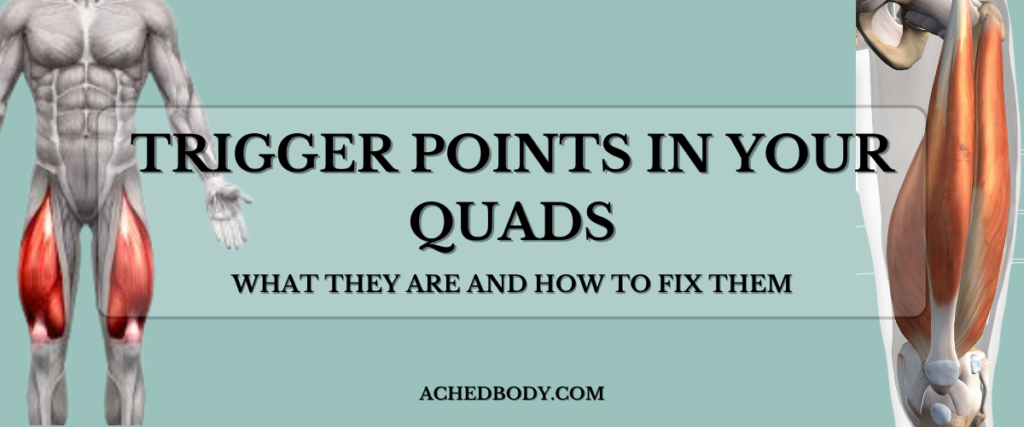
How to Release Trigger Points in the Quads
Tight quads can do more than make your legs feel stiff—they can also create pain in all your joints from your ankles to your lower back.
If stretching alone isn’t solving the problem, the real issue might be trigger points—those tight, tender knots in the muscle that don’t go away on their own.
In this guide, you’ll learn the basics on finding trigger points in your quadriceps using simple techniques like foam rolling, trigger point balls and specific stretching techniques.
When done properly, the techniques relieve pain, restore mobility, and get your legs feeling strong again.

What Are Trigger Points?
Trigger points are small areas within a muscle that feel like knots or tight bands.
They develop from overuse, poor posture, or staying in one position for too long.
In the quads, trigger points can send pain to the front or side of the thigh, around the kneecap, or even into the hip area.
You might feel like your legs are constantly tight or sore even without recent exercise. But only stretching your quads may not be enough.
How to Find Trigger Points in Your Quads
I like to find trigger points with a foam roller or massage ball about the size of a softball, but you can also use your hands.
Start by using any of the tools above to press along the front, inner, and outer thigh.
You will know when you find a trigger point because the muscle will be harder to move, you’ll feel the pressure intensify, or you’ll feel a slight burning feeling.
It’s also possible that you feel the pain in a joint that is near the muscle you are rolling.
And if you find a spot that feels like this or sends pain somewhere else, you’ve found a trigger point.
How to Release Quad Trigger Points
Foam Rolling Paired With A Stretch
This is the easiest way to apply broad, consistent pressure to the quads. Foam rolling your quads temporarily turns off muscle spindles in your muscle to relax the muscle and let you get into a deeper stretch.
When paired with a deep quad stretch and active release technique you can see here, it breaks up muscle adhesions and gets rid of trigger points.
Massage Ball or Lacrosse Ball Trigger Pointing
While a foam roller is great, it doesn’t allow you to get into the deeper tissue that you may need.
That’s why I made the Quad Trigger Point Guide.
I also recommend pairing a quad stretch with this technique for the same reasons mentioned in the foam rolling section…
But trigger pointing has the added benefit of being able to target specific areas of the muscle tissue much better, acting more like a massage than just a source of pressure.
Stretching
A mobile muscle is a healthy muscle.
The more flexibility you give your muscles, the better they will be able to serve you in your movement and handle the stresses of daily life that would turn into muscle adhesions and trigger points.
Use my Quad Stretching Guide or Ultimate Guide to Stretching to fix your flexibility issues!
Best Practices for Trigger Point Release
Start Slow And Breathe
Don’t dig too deep too fast—trigger points can be sensitive and if you go too hard you may do more damage than good.
If you’re clenching or holding your breath, you’re going too hard. Part of getting the muscles you are targeting to relax is telling your nervous system that you are relaxed.
The best way to do that is through slow and controlled breathing.
Roll and stretch
After releasing a trigger point, stretch the muscle to reinforce its new length. This is important for your body to adopt the new changes.
When Should You Release Quad Trigger Points?
If you are active or sedentary, A daily routine is always best, even if it’s 10 minutes a day.
Other times you may want to increase your sessions are:
- After intense workouts or long runs
- If you feel tightness or tension that doesn’t go away with stretching
- When you have unexplained knee or thigh discomfort
Final Take-Aways
Trigger points in your quads can sneak up on you. That’s why I want to give you the tools to attack first before they become too much to handle.
Use my quad guides on the fix your quad page to get rid of your pain and then check out other areas of the body that might need help!
Ask any question you have below and I’ll get back to you ASAP.
Good Luck,
-Nick